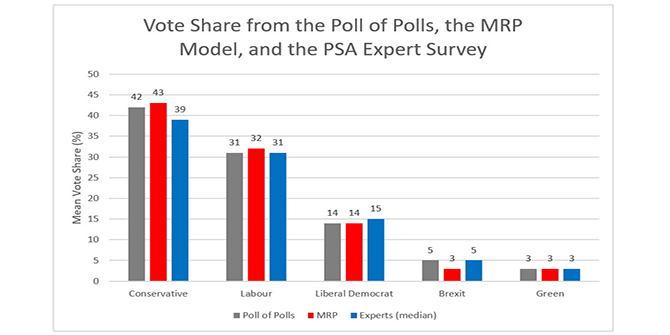 In an election marked by surprising outcomes and division, the Co-operative Party escaped not only unscathed but stronger, and is now the third largest in the House of Commons. In light of the its centenary year, Sean Kippin reviews the party’s history and writes that both the number and the high profile of its MPs are a testament to the effectiveness of such an alliance in political life.
In an election marked by surprising outcomes and division, the Co-operative Party escaped not only unscathed but stronger, and is now the third largest in the House of Commons. In light of the its centenary year, Sean Kippin reviews the party’s history and writes that both the number and the high profile of its MPs are a testament to the effectiveness of such an alliance in political life.
In an unexpected election, an unexpected result. Jeremy Corbyn’s Labour Party surged to a startling 40% of the vote, up almost 10% from Ed Miliband’s disastrous 2015 showing. Ultimately, this proved not to be enough, with Theresa May’s Conservatives winning 42.4% – itself a considerable jump from the 36.1% that David Cameron managed – and so emerging with a small majority. Despite this, and due to the iniquities and quirks of Britain’s dated First Past the Post electoral system, the Conservatives lost enough seats to relinquish their status as the majority party in the House of Commons.
In Scotland, the SNP shed seats to the three main ‘unionist’ parties: Labour, the Conservatives, and even the Liberal Democrats. In doing so, they also relinquished their status as the third biggest party in Parliament to the Co-operative Party, who not only successfully defended all of their seats, but increased their number to 38 and in doing so nudge ahead of the SNP, now down to a (still considerable) 35. Amongst those elected for the party were a former Shadow Chancellor, former and current Select Committee Chairs, and at least two former Council Leaders.
Despite the Co-op Party becoming the new ‘Third Party’ It is unlikely that these developments will receive much coverage in the mainstream press. This is for the understandable reason that few people have much knowledge or understanding of the Co-operative Party, which occupies a unique role as a ‘sister-party’ to Labour, with which it co-nominates candidates in a number of parliamentary, devolved, and local authority election contests. As a result, it is often treated – somewhat fairly – as being ‘part’ of the Labour Party. Nonetheless, it is a legally distinct entity, with its own staff, head office, rule-book, and set of institutional relationships with the wider UK cooperative movement of member owned businesses.
Founded 100 years ago in 1917 in order to give the cooperative movement and its organisations and ideas a voice in parliament, the Co-op Party has sought to apply the values and insights of cooperation and voluntary association in the political sphere through its partnership with Labour. Despite its low profile, it has at times achieved significant influence – for example being a driving force behind the enactment of the landmark consumer rights legislation of the 1960s and 1970s, and the creation of a Co-operative Development Agency (which was then abolished by Margaret Thatcher).
Following a difficult 1980s, in which the Co-operative movement and party each suffered at the hands of demutualisations and a struggling retail sector, the 1990s saw a recovery in the party’s fortunes. Overcoming the early setback of the failure to persuade the incoming Labour government to adopt an overarching ‘Co-operatives Act’, the party turned to the broader philosophy of ‘mutualism’, and were able to decisively influence the shape of Labour’s public service reform agenda, as well as delivering tangible benefits to their patrons in the form of a modernised regulatory framework which protected cooperatives, credit unions, and building societies from hostile takeovers. It was assisted in this by several of its number – such as Ed Balls, Alun Michael, and Gareth Thomas – gaining ministerial office and pushing for Co-operative Party policies from within the government.
Recent years for the party have seen a degree of turbulence for the Co-op Party; following the disastrous takeover of Britannia by the Co-op Bank (and a lurid scandal involving the latter’s Chairman), the link with the Co-operative Group – the dominant business in the cooperative sector and the provider of a large percentage of the Co-operative Party’s funding – has been repeatedly called into question. Though the link has been successfully defended for now, the future in this regard is far from clear, with many within the movement questioning the value of the link to politics in general and to Labour in particular. Nonetheless, under Ed Miliband, numerous Co-operative Party policies found their way into Labour’s election manifestos and their profile has heightened within the Labour Party over recent years.
The Corbyn leadership has also posed interesting questions for the Co-operative Party. Though traditionally associated with the centre-right of the Labour Party, the current group of Co-operative Party MPs is a reasonably representative cross-section of the PLP, with Blairite reformers, such as Stephen Twigg, co-existing with old Brownites like Jon Ashworth, and Corbyn supporters like Kate Osamor. This is one of the reasons that the suggestion that the Co-operative Party could be used as an anti-Corbyn faction within the PLP to cleave the party Leader out of power was always destined to fail. As a result of this, the 2017 election result must be gratifying for those within the party who hit back hard against the idea of sacrificing a 100-year-old alliance at the altar of internecine warfare.
While the Labour Party’s attention has shifted away from the managerial public service reform which marked Tony Blair’s premiership (and thus from what Patrick Diamond has called ‘social mutualism’) it has rediscovered under Jeremy Corbyn the overt language of cooperatives as a more socially just kind of business and radical thinking around the issue of shared ownership. In a well-trailed economic speech, the Shadow Chancellor promised to ‘double the size’ of the cooperative business sector if the party won power. While another 2017 election is not an entirely unrealistic prospect, for now the Labour Party – and thus the Co-operative Party – are still out of power, as they have been since 2010.
Nonetheless, in terms of parliamentary representation the Co-operative Party is now at its historic high point, in its centenary year, and with a number of high profile and capable Members of Parliament. The latter in particular can be credited to successive General Secretaries, but the current incumbent – Claire McCarthy – can take enormous credit for riding out the storm of recent attempts to cut the Co-op Group’s funding of the party, and thus perhaps saving it.
The matter is not permanently settled. But the idiosyncratic Labour/Co-op partnership has shown itself capable of adapting to and thriving in varied political contexts, both in government and in opposition, and within a radical or incrementalist Labour Party. It is testament to this most unusual of alliances – bringing together the trade unions with the retail cooperative sector, and two parties with their own linked and distinct histories and cultures – that it can not only persist, but thrive in the year 2017. And while the future may be far from certain, the Co-operative Party can look back on recent years and on this election with a considerable degree of satisfaction.
______
 Sean Kippin is Commissioning Editor at British Politics and Policy, having previously been the Managing Editor of the LSE’s Democratic Audit. He is currently a PhD student at the University of the West of Scotland
Sean Kippin is Commissioning Editor at British Politics and Policy, having previously been the Managing Editor of the LSE’s Democratic Audit. He is currently a PhD student at the University of the West of Scotland








A very fair assessment. Another reason for confidence is Corbyn’s support. I remember meeting him at an event in the mid ’80s and he wished me happy International Co-operative day! I suspect most members of the Co-operative Group would’ve remembered the day (1st Sat in July ftr), unless they had been prompted first.